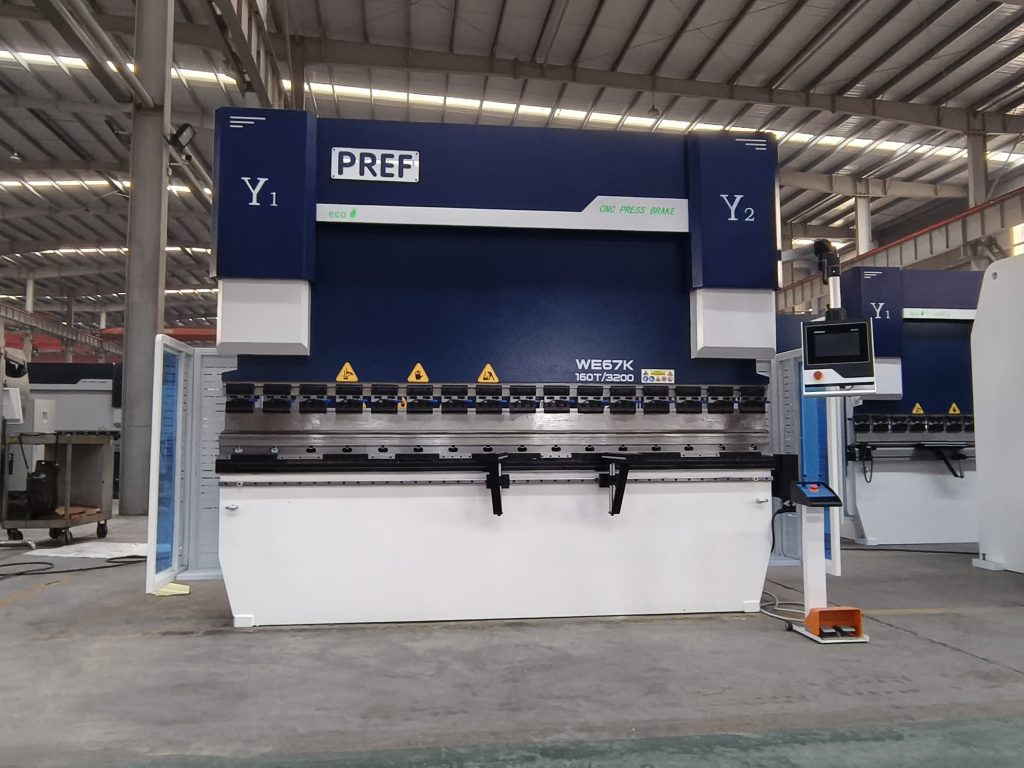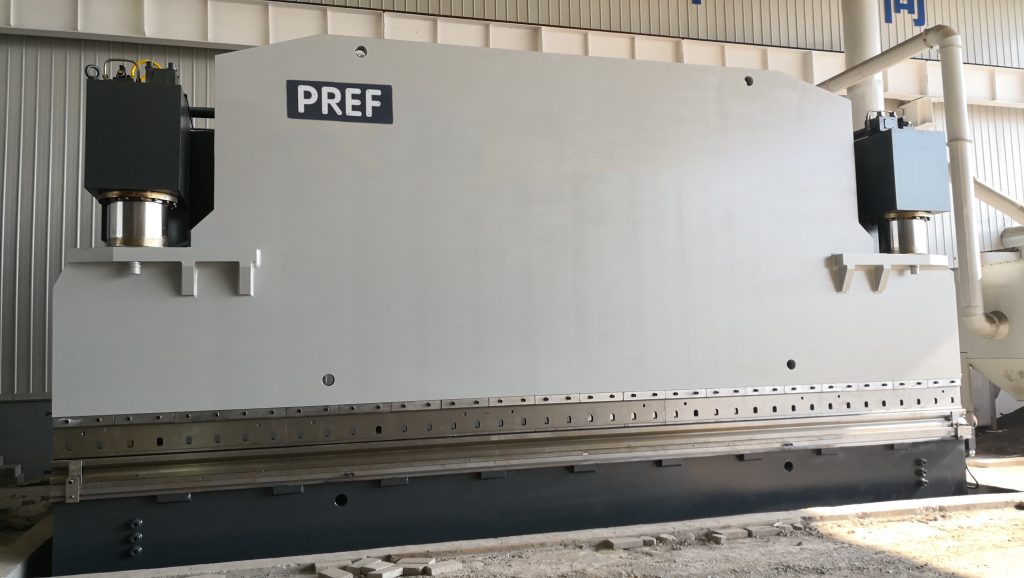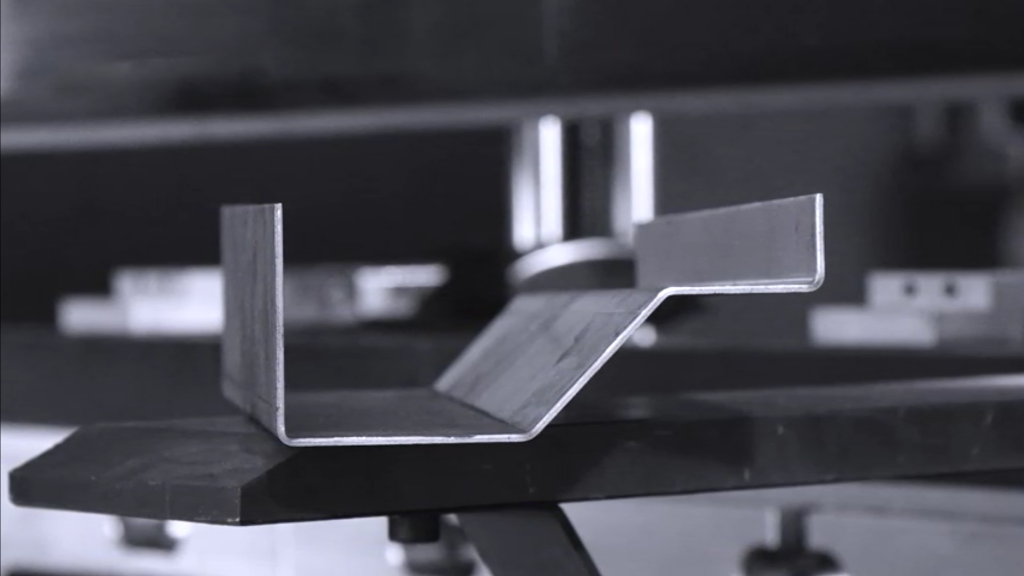Call Us Today!+86 18055583040|admin@zymtcnc.com

Call Us Today!+86 18055583040|admin@zymtcnc.com


Press brake is a machine that can bend metal sheets.
It applies pressure to make the metal sheet plastically deform between specific molds to achieve the required bending angle and shape.
Press brake usually consists of a fuselage, a workbench, a slider, a mold, a hydraulic system or a mechanical transmission system.
The fuselage provides an overall support structure to ensure the stability and rigidity of the machine. The workbench is used to place the metal sheet to be processed and provide support during the processing.
Driven by the power system, the slider moves up and down along the guide rail to apply pressure to the sheet.
The mold is a key component that determines the bending shape and angle of the sheet, including the upper mold and the lower mold. Molds of different shapes and specifications can achieve various complex bending requirements.
The power system can be hydraulically driven, using the pressure of the liquid to transmit power, with a large pressure output; it can also be mechanically driven, transmitting power through mechanical components such as gears and screws.
Press brakes are widely used in many industries such as machinery manufacturing, metal processing, automobiles, aerospace, and construction. They are one of the important equipment for forming and processing metal products.
For example, in a mechanical processing plant, a press brake is used to bend a stainless steel plate into a specific angle to make a protective shell for the equipment; in a kitchenware manufacturing company, a press brake is used to bend an aluminum plate into the shape of a stove panel.

Press brakes are divided into manual press brakes, hydraulic press brakes and CNC press brakes. Among them, manual press brakes are divided into mechanical manual press brakes and electric manual press brakes; hydraulic press brakes can be divided into torsion axis synchronization, mechanical-hydraulic synchronization and electro-hydraulic synchronization according to the synchronization mode; hydraulic press brakes can be divided into upper-moving type and lower-moving type according to the movement mode. The working principles of different types of press brakes are different. The following is a detailed introduction:
·Manual press brake: The movement of the press brake is controlled by manually operating the handle or foot pedal. Mechanical manual press brakes usually use mechanical transmission mechanisms, such as gears, racks, etc., to convert manpower into bending force; electric manual press brakes use electric motors to drive the bending mechanism.
·Hydraulic press brake: The pressure generated by the hydraulic system is used to achieve the bending action. The hydraulic press brake includes a bracket, a workbench and a clamping plate. The workbench is placed on the bracket. The workbench consists of a base and a pressure plate. The base is connected to the clamping plate through a hinge. The base consists of a base shell, a coil and a cover plate. The coil is placed in the depression of the base shell, and the top of the depression is covered with a cover plate. Its working principle is to energize the coil through a wire, and after energization, it generates gravity on the pressure plate, thereby achieving the clamping of the thin plate between the pressure plate and the base.
· CNC press brake: The CNC system is used to control the movement and accuracy of the press brake. The working principle of the CNC press brake is to program the CNC system, transmit the digital instructions to the PLC (programmable logic controller), and the PLC then transmits the signal to the control module. The module controls the relay, the relay controls the oil pump, and the oil pump drives the movement of the press brake, thereby achieving precise control of parameters such as bending angle, speed and pressure.
The working principle of the press brake is to apply pressure to the thin plate to cause it to undergo plastic deformation, thereby achieving bending processing. During the bending process, it is necessary to select the appropriate press brake type and mold according to the requirements of the workpiece, and adjust the bending parameters to ensure the bending quality and accuracy.
Manual press brakes rely on manual operation to complete bending work.
Features:
The operation is relatively simple and the cost is low.
It is suitable for small batches and simple shapes of bending processing.
The bending accuracy and efficiency are low, and the labor intensity is high.
For example, some small metal processing workshops may use manual press brakes when handling a small number of simple metal bending tasks.
The bending operation is achieved by providing power through the hydraulic system.
Features:
It has a large bending force and can handle thicker and larger plates.
The bending accuracy is high and the stability is good.
But the equipment occupies a large area and the maintenance cost is relatively high.
For example, in large steel structure processing enterprises, hydraulic press brakes are often used to bend heavy steel beams and other components.
A press brake that uses CNC technology for precise control.
Features:
It has the characteristics of high automation and intelligence, and can achieve complex shape bending through programming.
The bending accuracy is very high and can meet the requirements of high-precision processing.
High production efficiency, convenient and quick parameter adjustment.
CNC press brakes have been widely used in industries such as aerospace and automobile manufacturing that require extremely high precision of parts.
Combines electric and hydraulic technology to achieve synchronous bending.
Features:
Good synchronization performance and high consistency of bending angle.
Fast response speed, capable of rapid bending.
Energy saving effect is more significant.
Commonly used in bending processing occasions with high synchronization requirements.
A press brake that uses a torsion axis to achieve mechanical synchronization.
Features:
Relatively simple structure and moderate cost.
Synchronous accuracy can meet most general processing needs.
Suitable for medium-sized metal processing enterprises.

Press brake is a kind of equipment that plays an important role in the field of metal processing. Its main uses include the following aspects:
Metal sheet forming
Press brake can bend flat metal sheets into various shapes and angles according to design requirements, such as right angles, obtuse angles, acute angles, etc., so as to manufacture various parts and shells. For example, manufacturing the side panels of electrical cabinets, panels of chassis, etc.
Used to produce automotive parts, such as door frames, body panels, etc.
Improve precision and consistency
The angle and size of the bend can be precisely controlled to ensure the precision and consistency of the product. This is crucial for products that require high-precision matching, such as the shell of precision instruments.
In mass production, ensure that each bent product has the same quality standard.
Customized processing
It can flexibly adjust the bending parameters according to different design requirements to meet the requirements of various special shapes and sizes. For example, customized metal decorative parts for the construction industry.
Material saving
Through reasonable bending design, metal sheets can be maximized, waste generation can be reduced, and production costs can be reduced.
Enhance structural strength
Bending metal sheets can increase their structural strength and make them more resistant to external forces and loads. For example, metal structural parts used in bridge construction.

Manufacturing
In the machinery manufacturing industry, press brakes are used to manufacture various mechanical parts, such as machine tool housings, protective baffles, etc.
For the production of hardware products, such as tool handles, metal brackets, etc., press brakes can achieve precise bending.
Electronic industry
Produce housings and frames of electronic equipment, such as computer cases, display frames, etc., to ensure the stability and aesthetics of their structures.
Automotive industry
Bend automotive parts, such as door inner panels, frame components, etc., to meet the complex shapes and high strength requirements in automobile manufacturing.
Aerospace
Process metal structural parts of aircraft and spacecraft to ensure their reliability and safety under extreme conditions.
Construction field
Make metal components for construction, such as stair handrails, railings, metal decorative panels, etc.
Furniture manufacturing
Create frames and components of metal furniture, such as metal bed frames, chair frames, etc.
Kitchenware industry
Bend metal housings and components of kitchen equipment, such as oven housings, stove frames, etc.
Energy field
Used to manufacture components of wind power generation equipment, solar brackets, etc.
For example, in an automobile production plant, a press brake bends steel plates into specific shapes for manufacturing automobile anti-collision beams; in an electronics factory, a press brake bends aluminum plates into side panels of computer cases.
In short, press brakes play an indispensable role in many industries such as machinery manufacturing, automobiles, electronics, and construction, and are important tools for metal processing and product manufacturing.
Anhui ZYMT CNC Machine Tool Co., Ltd. has more than 20 years of experience in press brake manufacturing. It is a reliable company known for its press brakes. Our press brakes are of excellent quality and reasonable price, which will be a good choice for you! If you are interested in press brakes, you can browse our products and contact us at any time. We will provide excellent and timely service to answer your questions.